What is a Cover Letter? Why Is It Important?
A job application cover letter is a crucial document that accompanies your resume when you apply for a job. It serves as your introduction to the hiring manager, providing an opportunity to showcase your personality, skills, and enthusiasm for the position. Unlike a resume, which presents a factual summary of your experience, a cover letter allows you to tell a story and explain why you’re the perfect fit for the specific role and company. It’s your chance to make a strong first impression and convince the employer to read your resume in detail. A well-crafted cover letter can significantly increase your chances of getting an interview, while a poorly written one can lead to your application being overlooked.
Cover Letter Structure A Step-by-Step Guide
Structuring your cover letter effectively is essential for conveying your message clearly and professionally. A standard cover letter typically follows a specific format, making it easy for the reader to quickly grasp the key information. This structure not only enhances readability but also ensures you address all the critical aspects of your candidacy. A well-organized cover letter will guide the hiring manager through your qualifications, experiences, and aspirations, making it easier for them to assess your suitability for the job. The goal is to create a compelling narrative that captures their attention and motivates them to invite you for an interview. In the following sections, we’ll break down each part of the cover letter structure in detail.
Contact Information Your Header
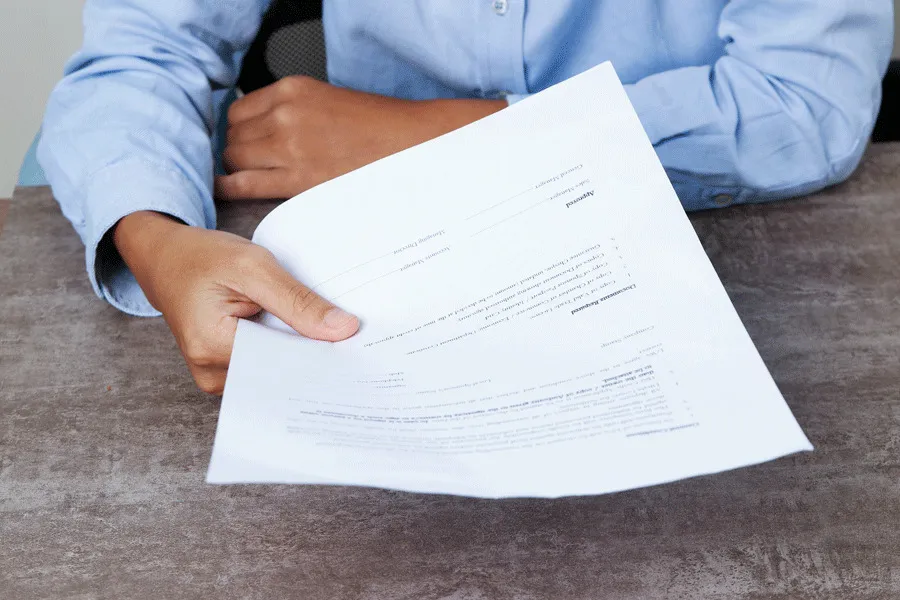
The header of your cover letter should contain your contact information, making it easy for the employer to reach you. Include your full name, phone number, email address, and LinkedIn profile URL (optional). This information should be clearly displayed at the top of the letter, ensuring it’s readily accessible. Using a professional email address is a must; avoid using nicknames or unprofessional language. Make sure your contact information is accurate and up-to-date, so potential employers can easily connect with you. Ensure your header is formatted consistently with your resume, maintaining a professional and cohesive appearance.
The Greeting Proper Salutations
The greeting sets the tone for your cover letter. Aim to address the hiring manager or the specific person in charge of hiring if possible. If you can’t find a name, use a general salutation like ‘Dear Hiring Manager’ or ‘Dear [Company Name] Hiring Team’. Avoid generic greetings such as ‘To Whom It May Concern,’ which can make your letter feel impersonal. Researching the company’s website or LinkedIn can often reveal the name of the hiring manager. Addressing your letter to a specific person shows that you’ve taken the time to personalize your application, which can significantly boost your chances of getting noticed.
Opening Paragraph Grab Attention
The opening paragraph is your first chance to grab the reader’s attention. Start by stating the position you’re applying for and where you saw the job posting. Then, provide a concise and compelling statement about why you’re interested in the role and the company. Consider mentioning something that sparks your interest in the job or the company. Make it clear why you’re a strong candidate, highlighting one or two key skills or experiences that make you a great fit. This will immediately capture the hiring manager’s interest and encourage them to read further. The opening should quickly and clearly state your objective.
Body Paragraphs Highlight Your Skills
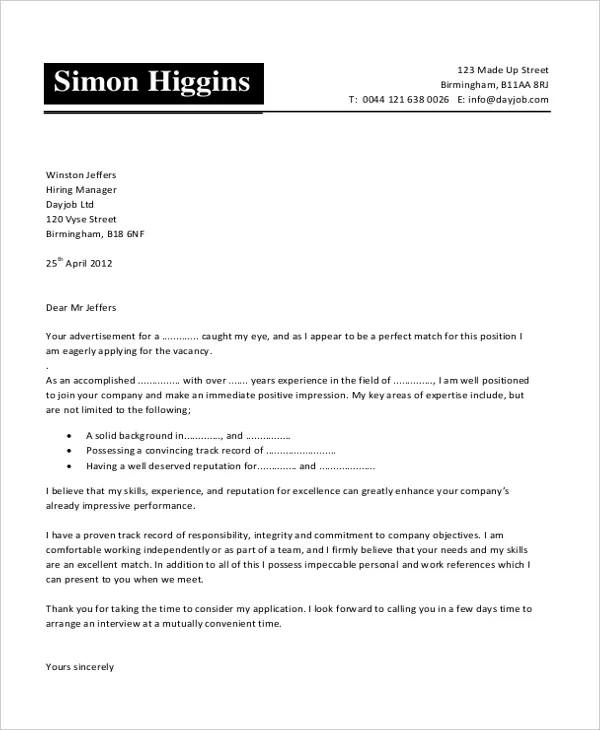
The body paragraphs are where you elaborate on your qualifications and experiences. Focus on demonstrating how your skills and experiences align with the job requirements. Provide specific examples of how you’ve successfully handled similar responsibilities in the past. Use the job description as a guide to identify the key skills and experiences the employer is seeking. Tailor your examples to match these requirements, using keywords from the job description. This shows that you’ve read the job posting carefully and are genuinely interested in the role. Aim to demonstrate how your skills and experiences can contribute to the company’s success.
Tailor Your Letter to the Job
Customizing your cover letter for each job application is crucial. Avoid sending generic letters; instead, personalize each one to match the specific requirements of the role and the company’s values. Research the company’s mission, culture, and recent achievements to show that you understand their business. Use the job description to identify the key skills and experiences the employer is seeking. Then, highlight your relevant qualifications and tailor your examples to align with these requirements. This will show the hiring manager that you are genuinely interested in the position and that you have the skills and experiences to excel in the role. Personalization demonstrates your dedication and attention to detail.
Closing Paragraph Call to Action
In your closing paragraph, summarize your interest in the position and express your enthusiasm for the opportunity. Reiterate your key qualifications and express your confidence in your ability to contribute to the company’s success. Include a call to action, such as requesting an interview or stating your availability for a meeting. Thank the hiring manager for their time and consideration. End your letter with a professional closing, such as ‘Sincerely’ or ‘Best regards,’ followed by your full name. A strong closing paragraph leaves a lasting positive impression and encourages the hiring manager to take the next step.
Proofreading and Formatting Make It Perfect
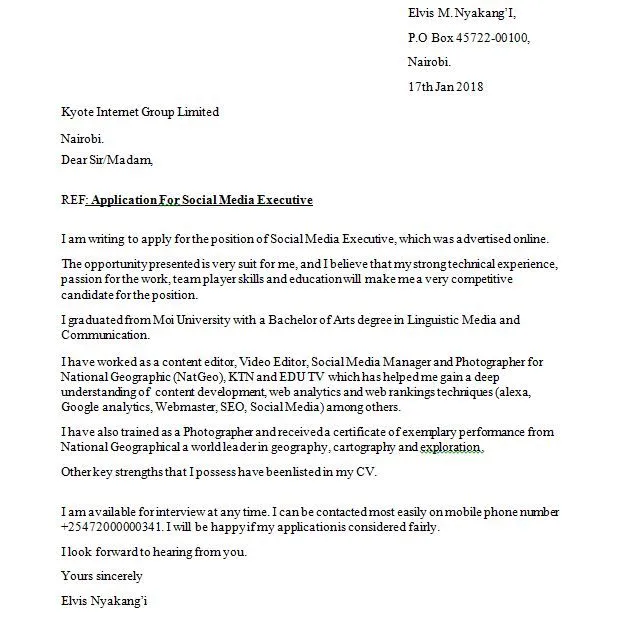
Proofreading and formatting are critical steps in ensuring your cover letter is polished and professional. Carefully proofread your letter for any grammatical errors, typos, and punctuation mistakes. Ask a friend or family member to review it as well, as a fresh pair of eyes can often catch errors you might miss. Use a clear, easy-to-read font, and maintain consistent formatting throughout the document. Ensure your letter is well-organized, with clear headings, concise paragraphs, and appropriate spacing. A well-formatted and error-free cover letter demonstrates attention to detail and professionalism, which can significantly improve your chances of getting an interview. Pay close attention to spelling and grammar, as errors can create a negative impression.
Top 7 Tips for a Winning Cover Letter
Research the Company & Job
Before writing your cover letter, research the company and the specific job you’re applying for. Understand the company’s mission, values, and culture. Review the job description carefully to identify the key skills and experiences the employer is seeking. This research will help you tailor your cover letter to demonstrate your understanding of the role and your alignment with the company’s goals. Knowing the company’s background helps you to show your sincere interest and to use specific company language. Customization shows you have taken the time and effort to prepare a personalized application, increasing your chance of success.
Highlight Key Skills & Achievements
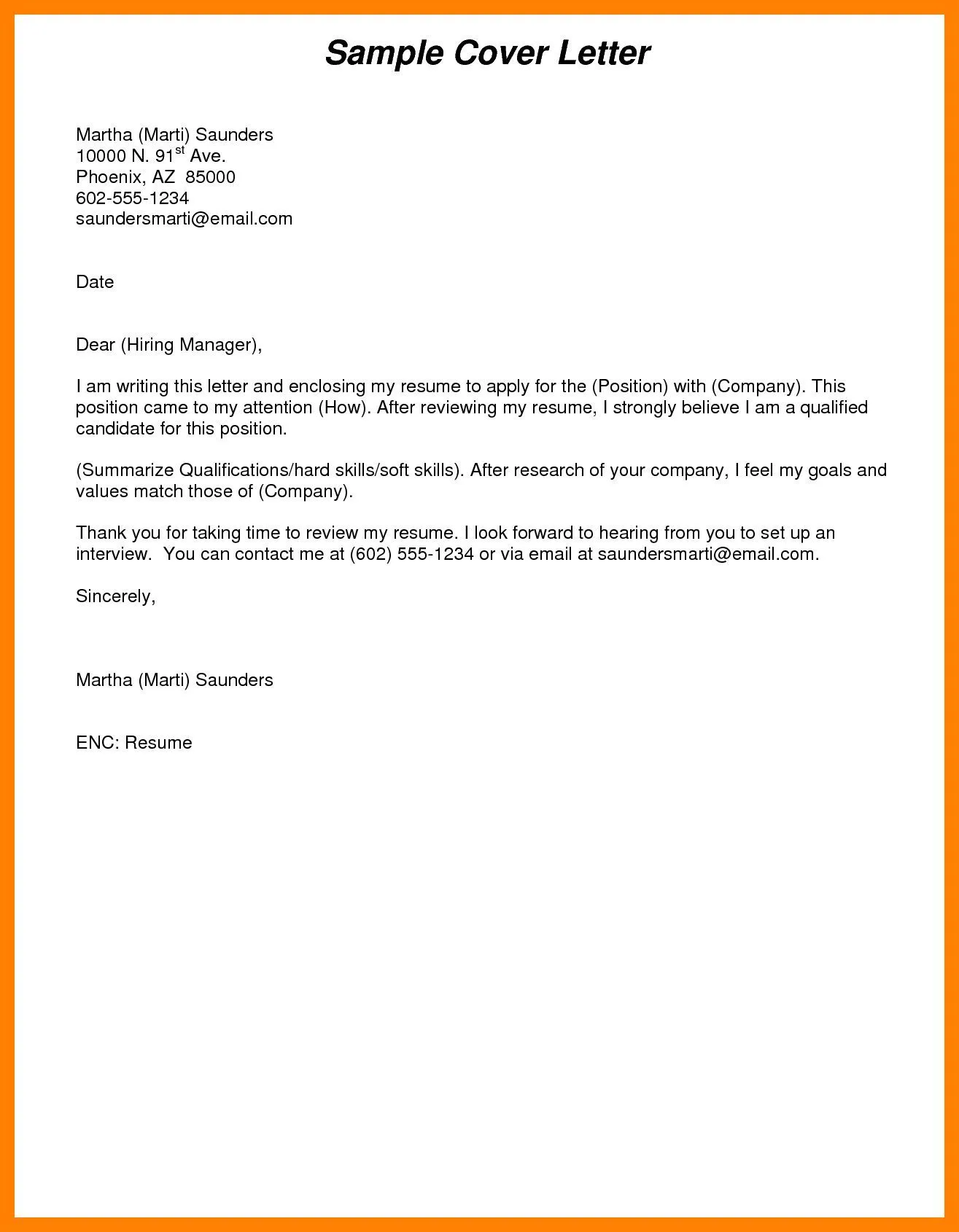
In your cover letter, highlight the key skills and achievements that make you a strong candidate for the job. Focus on the skills and experiences mentioned in the job description. Provide specific examples of your accomplishments to demonstrate your abilities. Quantify your achievements whenever possible by using numbers and data to show the impact of your work. This will make your cover letter more compelling and show that you can deliver results. Ensure that your most relevant skills are clearly stated and supported by solid evidence of your success. This should convince the hiring manager that you’re an ideal fit for the role.
Show Enthusiasm & Personality
Let your enthusiasm and personality shine through in your cover letter. While maintaining a professional tone, express your genuine interest in the position and the company. Share what excites you about the role and how your skills align with the company’s needs. Use a positive and confident tone throughout your letter, showing that you’re eager to contribute to the team. Let your personality come across naturally to create a positive connection with the reader. Enthusiasm and personality help you stand out from other applicants, making you more memorable. Showing your personality allows the hiring manager to see you as a person.
Quantify Your Accomplishments
Whenever possible, quantify your accomplishments by using numbers, data, and metrics. Instead of saying ‘Improved customer satisfaction,’ state ‘Increased customer satisfaction by 15% within six months.’ Quantifying your achievements provides concrete evidence of your skills and the impact you’ve made in previous roles. It makes your cover letter more persuasive and shows the value you can bring to the company. Using numbers is a great way to demonstrate your success and to prove that you have a good track record. Quantifiable achievements make it easier for hiring managers to gauge your ability to deliver results.
Use Action Verbs
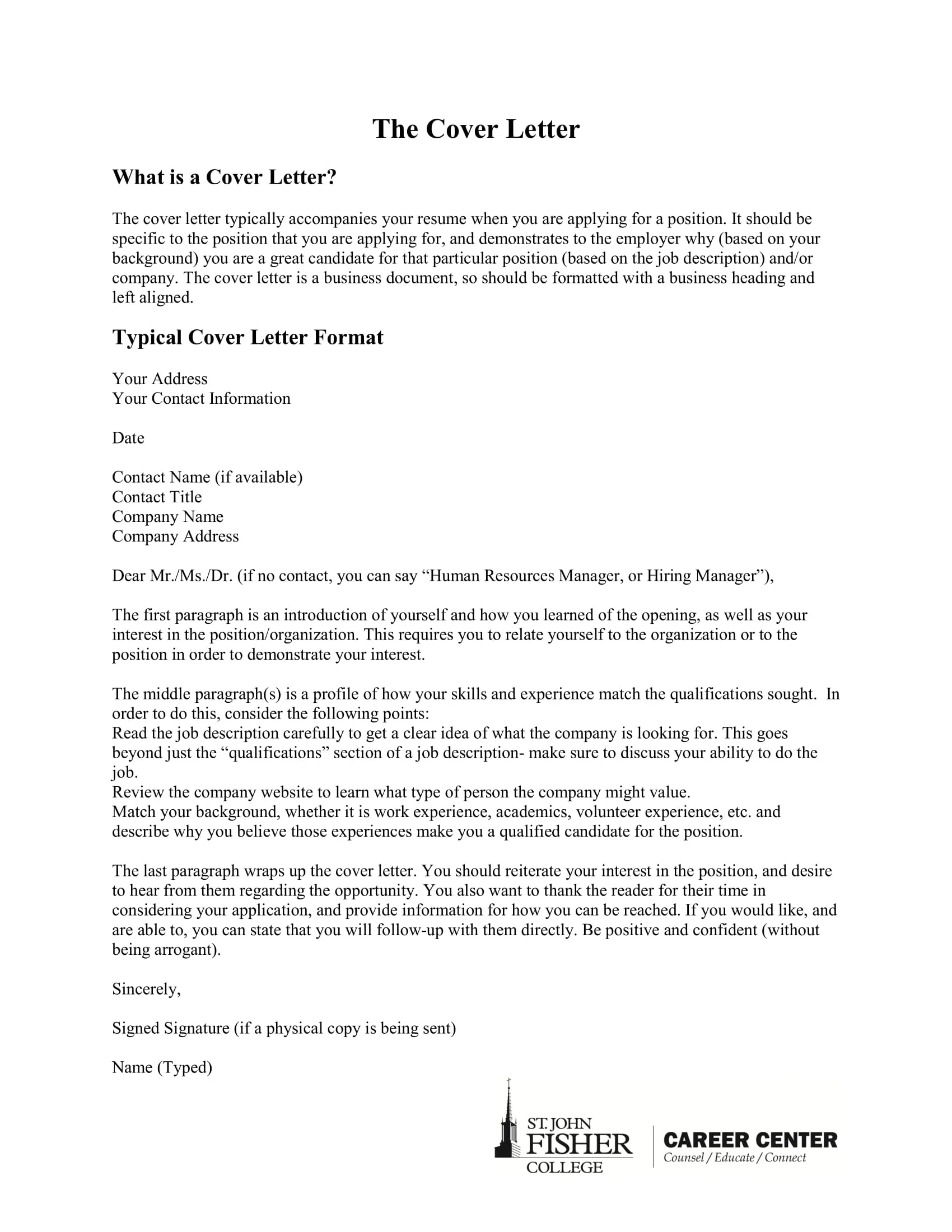
Use strong action verbs to describe your skills and experiences. Instead of saying ‘Responsible for managing projects,’ use action verbs like ‘Led project teams,’ ‘Managed project budgets,’ or ‘Implemented project strategies.’ Action verbs make your cover letter more dynamic and engaging, conveying your skills and experiences more effectively. They also demonstrate your ability to take initiative and achieve results. Review your cover letter and replace passive verbs with stronger action verbs to make your achievements stand out. Strong action verbs will make your writing more direct and assertive, making a better impression on hiring managers.
Keep It Concise
Keep your cover letter concise and to the point. Aim for one page or less, focusing on the most relevant information. Avoid unnecessary jargon and overly long sentences. Use clear and concise language to get your message across. Make sure every sentence is relevant to the job you are applying for. The goal is to provide enough information to showcase your qualifications without overwhelming the reader. Hiring managers are busy people, so they appreciate a well-written, succinct cover letter that quickly highlights your strengths. A concise letter demonstrates your respect for their time and enhances readability.
Proofread Meticulously
Proofread your cover letter meticulously before submitting it. Check for any spelling, grammatical, or punctuation errors. Use spell-check tools, but also read the letter carefully yourself. Ask someone else to review your cover letter as a second pair of eyes can often catch mistakes you might miss. Errors can create a negative impression, and can suggest a lack of attention to detail. A well-proofread cover letter demonstrates professionalism and respect. Make sure all your contact information is correct and up to date. Proofreading is the final step in the process and can make or break your chances of getting an interview.
